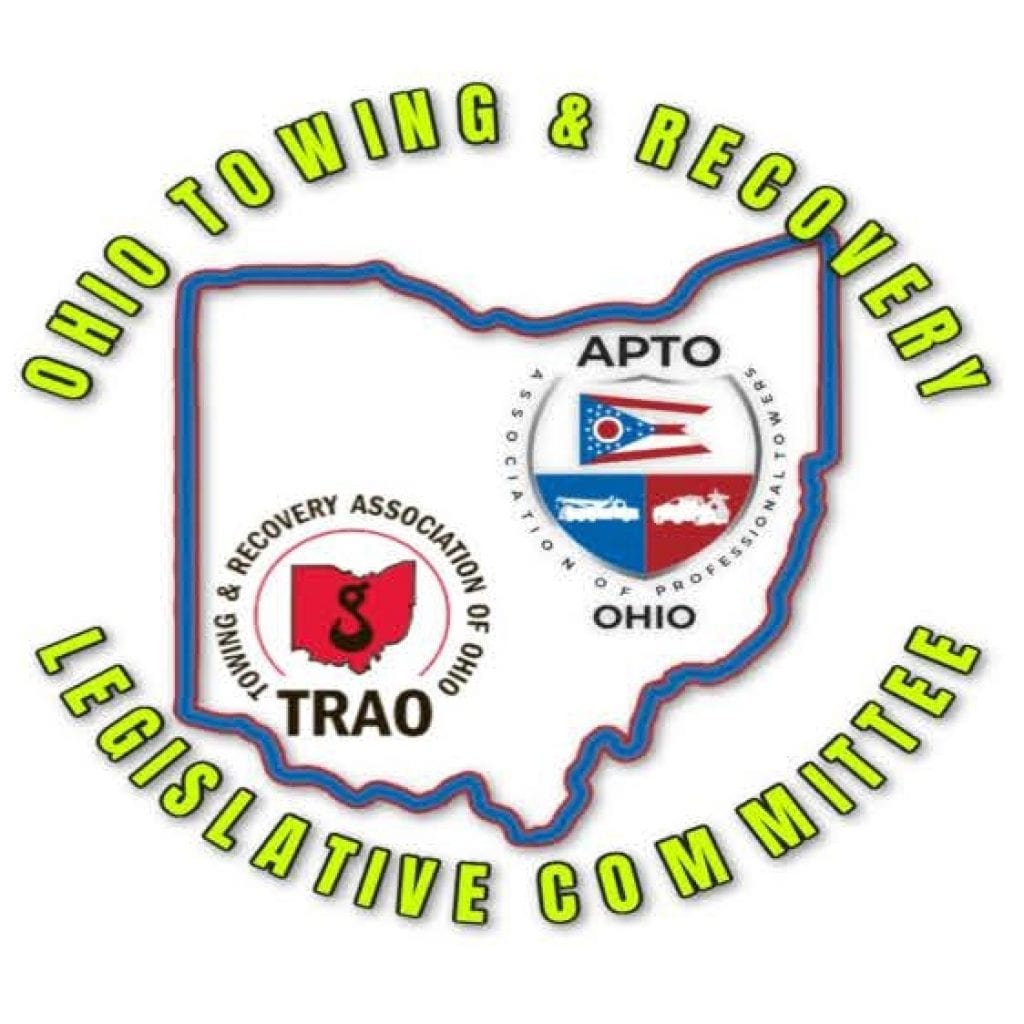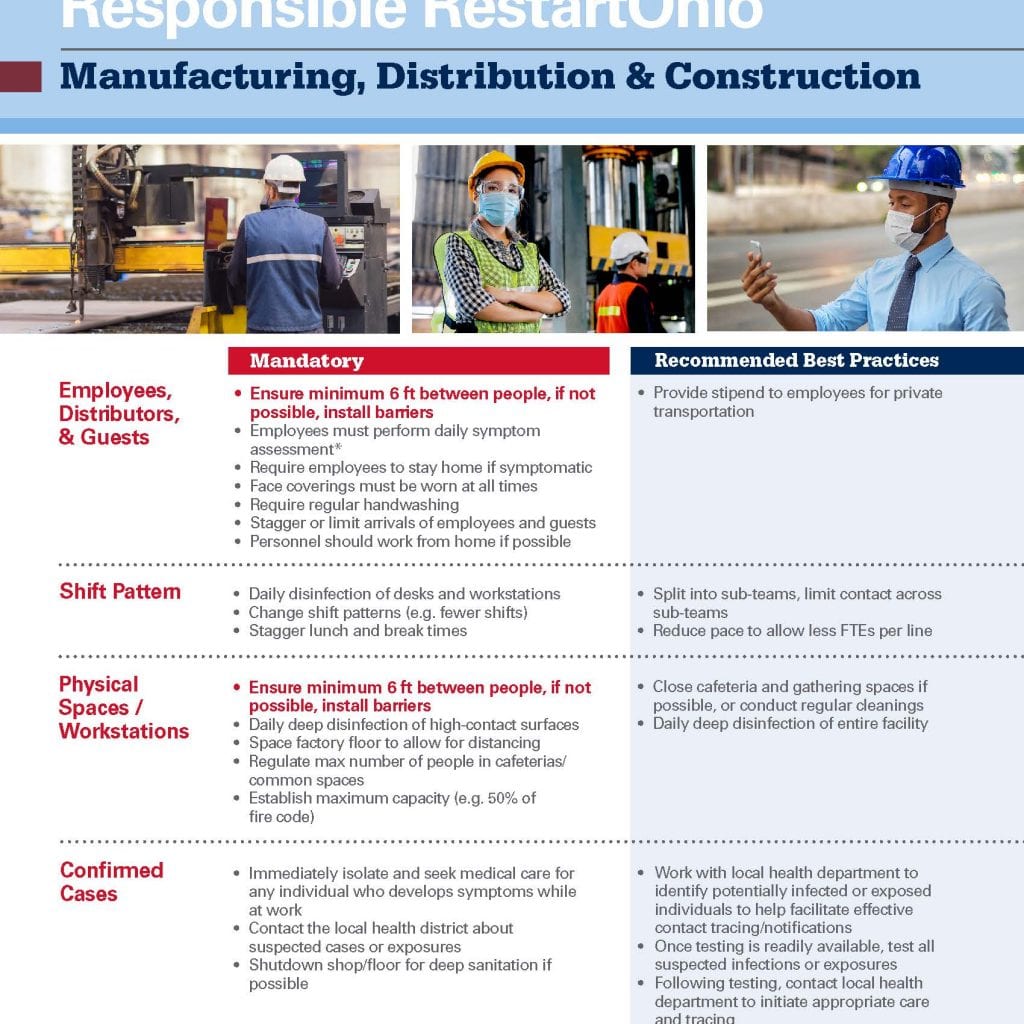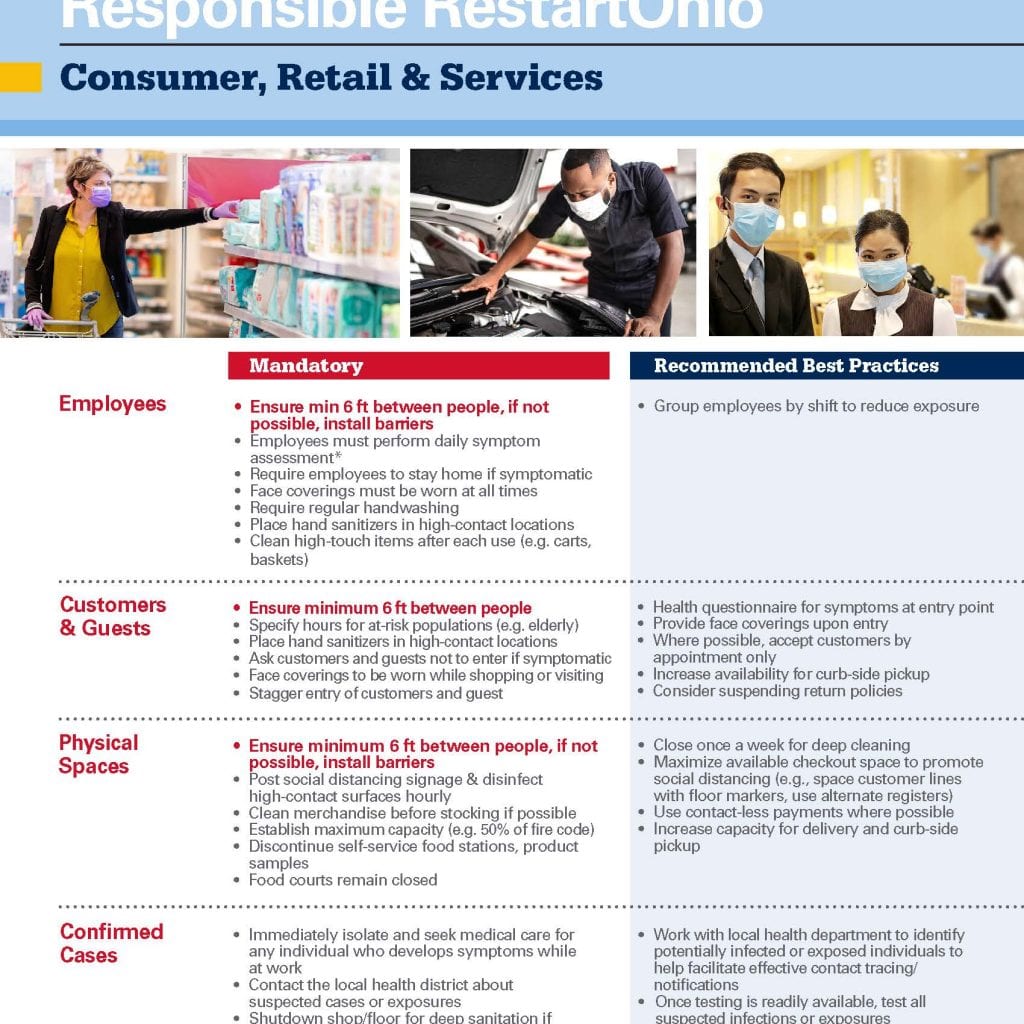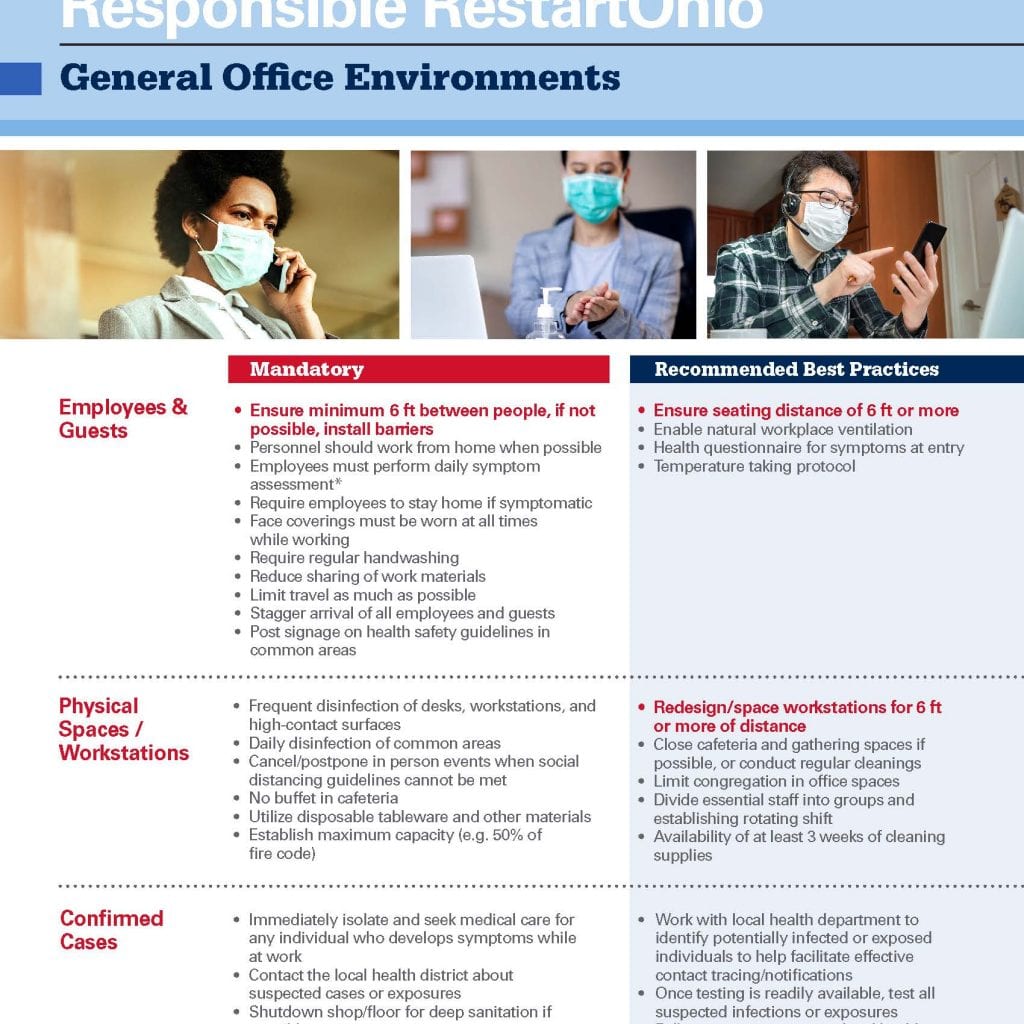News
![]() trao Apr 27, 2020
trao Apr 27, 2020
State and Federal Update

TO: The Ohio Towing and Recovery Industry
FROM: The Ohio Towing and Recovery Legislative Committee
RE: State and Federal Update
WHAT YOU NEED TO KNOW
FEDERAL UPDATE:
Late last week, the US House of Representatives reconvened to vote on a Senate Amendment to H.R. 266 – the “Paycheck Protection Program and Health Care Enhancement Act.” The legislation will provide approximately $320 billion in additional funding to the Paycheck Protection Program (PPP). If you have not applied for the PPP program but are still in need of financial assistance, please do not wait to apply for the program. If you have already applied, but have not heard a response, please follow-up with your local bank to check on the status of your application, especially with the additional funding for the program just approved.
In addition, the SBA released an updated FAQ document on the Paycheck Protection Program (PPP) in response to some of the public criticism about businesses owned by large companies receiving PPP funds and clarified eligibility. Specifically, in new question 31, the SBA indicates all borrowers should consider the certification they must make when applying for loans that “[c]urrent economic uncertainty makes this loan request necessary to support the ongoing operations of the applicant.”
As both the federal and state governments begin the process of reopening the economy, there are several resources that will help companies prepare regarding personal protective equipment requirements and managing healthcare workforce. Please review the following information and stay up to date, especially concerning essential infrastructure businesses:
DHS/FEMA – FEMA issued guidance summarizing “how organizations should consider and manage their personal protective equipment (PPE) needs while ensuring the protection of workers during the coronavirus (COVID-19) pandemic response.”
Department of Labor/OSHA – OSHA issued an alert listing safety tips employers can follow to help protect construction workers from exposure to the coronavirus.
OHIO UPDATE:
Today, Governor DeWine announced the initial steps of his plan to reopen businesses shuttered in response to the ongoing coronavirus pandemic. The governor said starting May 1 all health care procedures that do not require an overnight stay in the hospital can move forward. On May 4, all construction, distribution and manufacturing businesses that have not been allowed to continue operation during the pandemic can reopen. General offices also will be allowed to reopen on that date. Starting May 12, consumer, retail and service businesses can reopen.
All employees and customers must wear facial coverings when inside the businesses, he said. Other guidelines cover daily health assessments, maintenance of sound hygiene practices including 6-foot social distancing, limiting customer capacity, cleaning and sanitizing, and reporting infections.
Additional details are available at the coronavirus website. In addition, attached are three worksheets describing the mandatory requirements and recommended best practices for the three primary economy sectors set to start re-opening, including: 1.) Manufacturing, Distribution & Construction, 2.) Consumer, Retail & Services, 3.) General Office Environments. PLEASE REVIEW THESE DOCUMENTS TO BE SURE YOUR BUSINESS IS PREPARED.
Here is a brief review the requirements for each sector:
- Manufacturing, Distribution & Construction
- Printable PDF format can be found here.
For Employees, Distributors, & Guests:
Mandatory
- Ensure minimum 6 ft between people, if not possible, install barriers
- Employees must perform daily symptom assessment*
- Require employees to stay home if symptomatic
- Face coverings must be worn at all times
- Require regular hand washing
- Stagger or limit arrivals of employees and guests
- Personnel should work from home if possible
Recommended Best Practices
- Provide stipend to employees for private transportation
Shift Pattern:
Mandatory
- Daily disinfection of desks and workstations
- Change shift patterns (e.g. fewer shifts)
- Stagger lunch and break times
Recommended Best Practices
- Split into sub-teams, limit contact across sub-teams
- Reduce pace to allow less FTEs per line
Physical Spaces / Workstations:
Mandatory
- Ensure minimum 6 ft between people, if not possible, install barriers
- Daily deep disinfection of high-contact surfaces
- Space factory floor to allow for distancing
- Regulate max number of people in cafeterias/common spaces
- Establish maximum capacity (e.g. 50% of fire code)
Recommended Best Practices
- Close cafeteria and gathering spaces if possible, or conduct regular cleanings
- Daily deep disinfection of entire facility
Consumer, Retail & Services
- Printable PDF format can be found here.
For Employees:
Mandatory
- Ensure min 6 ft between people, if not possible, install barriers
- Employees must perform daily symptom assessment*
- Require employees to stay home if symptomatic
- Face coverings must be worn at all times
- Require regular hand washing
- Place hand sanitizers in high-contact locations
- Clean high-touch items after each use (e.g. carts, baskets)
Recommended Best Practices
- Group employees by shift to reduce exposure
For Customers & Guests:
Mandatory
- Ensure minimum 6 ft between people
- Specify hours for at-risk populations (e.g. elderly)
- Place hand sanitizers in high-contact locations
- Ask customers and guests not to enter if symptomatic
- Face coverings to be worn while shopping or visiting
- Stagger entry of customers and guest
Recommended Best Practices
- Health questionnaire for symptoms at entry point
- Provide face coverings upon entry
- Where possible, accept customers by appointment only
- Increase availability for curb-side pickup
- Consider suspending return policies
For Physical Spaces:
Mandatory
- Ensure minimum 6 ft between people, if not possible, install barriers
- Post social distancing signage & disinfect high-contact surfaces hourly
- Clean merchandise before stocking if possible
- Establish maximum capacity (e.g. 50% of fire code)
- Discontinue self-service food stations, product samples
- Food courts remain closed
Recommended Best Practices
- Close once a week for deep cleaning
- Maximize available checkout space to promote social distancing (e.g., space customer lines with floor markers, use alternate registers)
- Use contact-less payments where possible
- Increase capacity for delivery and curb-side pickup
For Employees & Guests:
Mandatory
- Ensure minimum 6 ft between people, if not possible, install barriers
- Personnel should work from home when possible
- Employees must perform daily symptom assessment*
- Require employees to stay home if symptomatic
- Ensure minimum 6 ft between people, if not possible, install barriers
- Face coverings must be worn at all times while working
- Require regular hand washing
- Reduce sharing of work materials
- Limit travel as much as possible
- Stagger arrival of all employees and guests
- Post signage on health safety guidelines in common areas
Recommended Best Practices
- Ensure seating distance of 6 ft or more
- Enable natural workplace ventilation
- Ensure seating distance of 6 ft or more
- Health questionnaire for symptoms at entry
- Temperature taking protocol
For Physical Spaces / Workstations:
Mandatory
- Frequent disinfection of desks, workstations, and high-contact surfaces
- Daily disinfection of common areas
- Cancel/postpone in person events when social distancing guidelines cannot be met
- No buffet in cafeteria
- Utilize disposable tableware and other materials
- Establish maximum capacity (e.g. 50% of fire code)
Recommended Best Practices
- Redesign/space workstations for 6 ft or more distance
- Close cafeteria and gathering spaces if possible, or conduct regular cleanings
- Limit congregation in office spaces
- Redesign/space workstations for 6 ft or more of distance
- Divide essential staff into groups and establishing rotating shift
- Availability of at least 3 weeks of cleaning supplies




